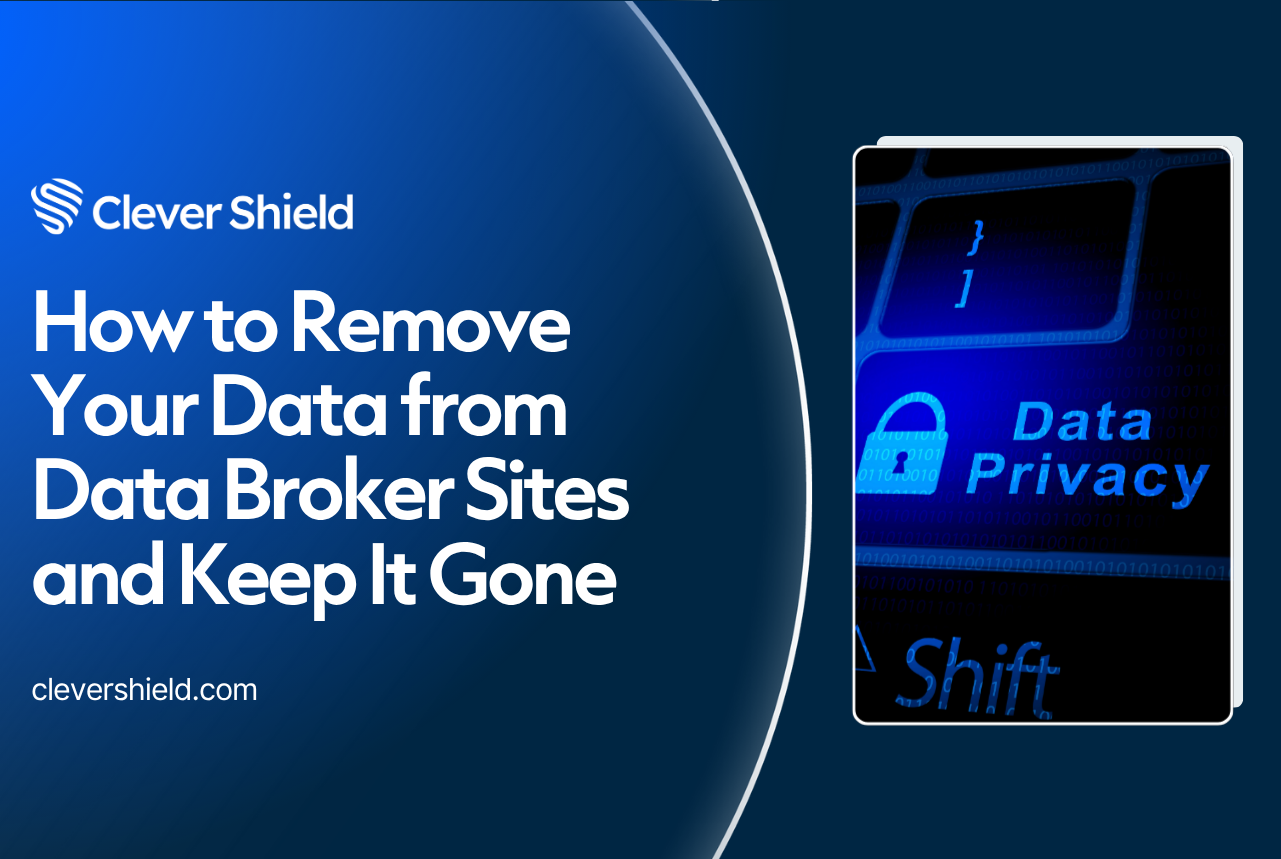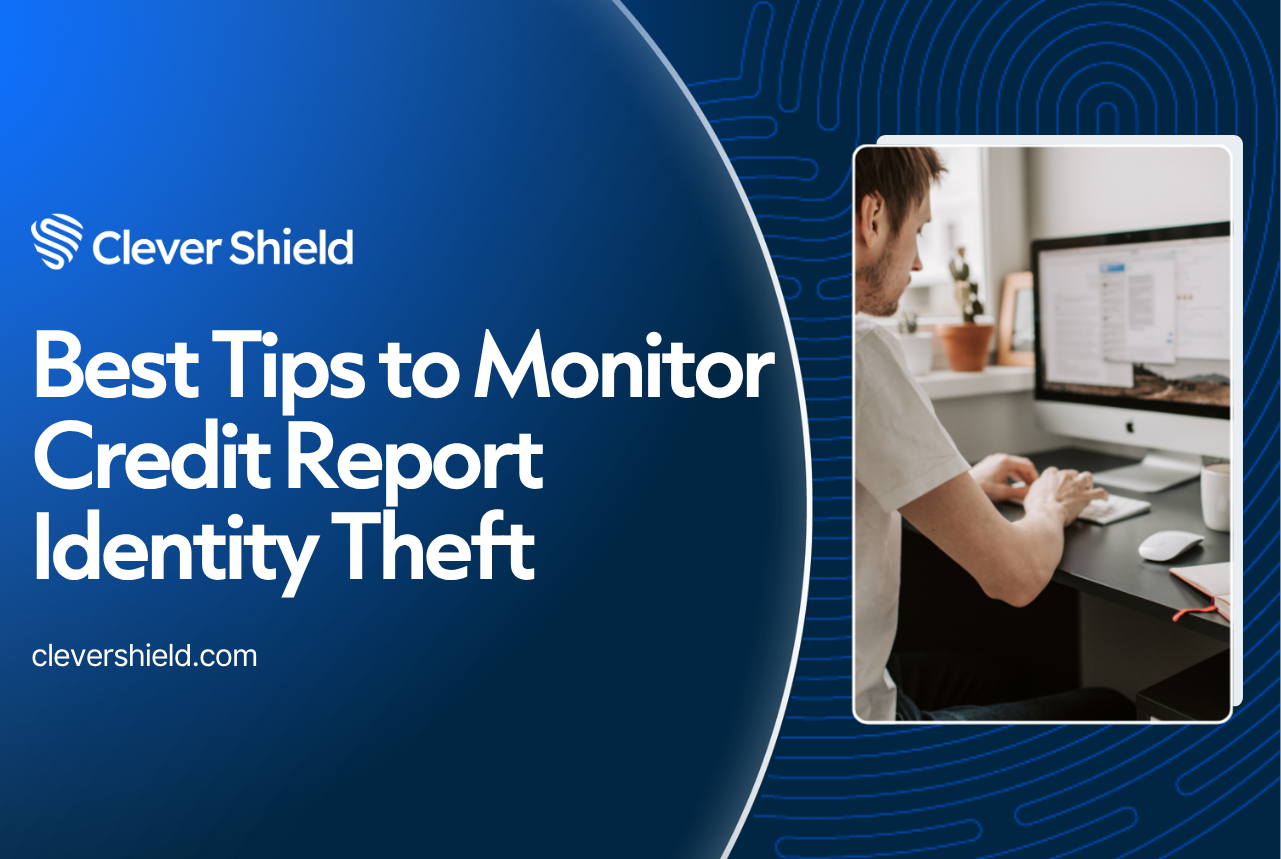To stop identity theft online, follow these key strategies on how to stop identity theft online. This article covers tips on protecting your personal information, recognizing warning signs, and securing your devices.
Key Takeaways
-
Identity theft involves the unauthorized use of personal information, with common tactics including phishing, malware, and data breaches, highlighting the need for vigilance.
-
Recognizing early warning signs, such as unfamiliar charges and changes in credit reports, along with proactive credit monitoring, is essential for early detection and prevention of identity theft.
-
Implementing strong passwords, enabling multifactor authentication, and using secure networks are critical measures to protect personal information from identity theft.
Understanding Identity Theft Online
Identity theft is using someone’s sensitive personal information to commit fraud. This can include anything from your social security number, birth date, or even your mother’s maiden. When this information falls into the wrong hands, it can be used to open new accounts, make unauthorized purchases, and even commit crimes in your name. The consequences can be devastating, affecting your financial stability and personal reputation. An identity thief can cause significant harm if they gain access to your information.
Common tactics used by identity thieves online include:
-
Phishing scams: trick users into revealing personal information through fake messages. Clicking on a link in a phishing attempt may lead to entering personal information on a scammer’s site.
-
Malware
-
Data breaches: unauthorized access to databases steals personal information, exposing sensitive data and putting countless individuals at risk.
-
Oversharing.
It’s crucial to be aware of the various online threats that aim to exploit your personal information. Email and internet scams are becoming increasingly sophisticated, making it essential to stay vigilant. Understanding how identity thieves operate and what information they target helps in better protecting yourself from their schemes.
Recognizing Warning Signs of Online Identity Theft
Spotting the warning signs of identity theft early can save you from significant damage. Common indicators include unexpected account changes, unfamiliar charges, and unusual login activity. For instance, if you notice a new account on your credit report that you didn’t open, it could be a red flag. Similarly, receiving debt collection calls for accounts you never initiated is a cause for concern.
Credit monitoring plays a vital role in combating identity theft by:
-
Detecting unusual or unauthorized activity, enabling early detection of potential identity theft.
-
Helping you regularly check your credit reports to identify suspicious activity and prevent potential damage.
-
Allowing you to catch unauthorized transactions or unfamiliar accounts before they escalate.
In today’s digital landscape, cyber intrusions are becoming more complex, necessitating user vigilance to prevent identity theft. Staying informed about the latest threats and being proactive in monitoring your financial accounts can make a significant difference. Remember, the sooner you detect suspicious activity, the quicker you can take action to protect yourself.
Protecting Personal Information Online
Protecting your personal and financial information online is crucial in the digital age. When entering sensitive data online, follow these guidelines:
-
Always ensure the web address starts with ‘https’.
-
Look for a closed padlock icon, indicating the site is secure.
-
Confirm you are on the correct website before giving personal information, such as your bank’s site.
These steps help reduce the risk of identity theft.
Avoid oversharing sensitive information on social media platforms. Fraudsters often scour social media for personal details that can aid in their schemes, including fraudulent return tactics. Always verify the caller’s identity before providing personal information over phone calls or through a text message.
Additionally, refrain from using public Wi-Fi for sensitive transactions; opt for a secure network instead. These preventive measures are crucial for safeguarding against identity theft.
Using Strong Passwords
Strong passwords are key to safeguarding your online accounts against unauthorized access. A strong password should ideally:
-
Consist of at least 15 characters
-
Include a mix of uppercase and lowercase letters
-
Contain numbers
-
Include symbols
This complexity makes it harder for identity thieves to crack your passwords and gain access to your accounts. Additionally, reusing the same password across multiple accounts increases the risk of identity theft, as access to one account can lead to unauthorized access to others.
A secure way to manage passwords is to write them down on a protected piece of paper, away from your computer to avoid digital theft. Alternatively, consider using a password manager to simplify the process of creating and securely storing complex passwords.
Using strong, unique password for each online account significantly reduces the risk of identity theft.
Enabling Multifactor Authentication
Multifactor authentication (MFA) enhances security by requiring multiple verification methods in addition to a password. Common forms of MFA include receiving a one-time code via text or using biometrics. This additional security layer makes it harder for identity thieves to access your accounts, even with your password.
Two-factor authentication requires an additional verification method besides entering a password. For instance, after entering your password, you might receive a code on your phone to input for access. This extra step ensures that only you can access your accounts, providing an additional barrier against identity theft.
Securing Devices and Networks
Securing your devices and networks is a critical step in preventing identity theft. To enhance your security:
-
Install legitimate antivirus and antispyware software to reduce the risk of identity theft.
-
Keep your antivirus software updated and current for optimal protection.
-
Implement strong home internet security measures to guard against cyber threats targeting connected devices.
-
Never turn off your firewall as it is crucial for maintaining network security.
Be cautious and verify the legitimacy of public Wi-Fi networks to avoid connecting to potential security threats. Devices such as smart TVs and home automation systems may require additional security measures beyond built-in features.
By taking these steps, you can protect your personal information from cyber threats and reduce the risk of identity theft.
Keeping Software Updated
Regular firmware and software updates:
-
Patch vulnerabilities that hackers may exploit.
-
Often include security patches that fix known vulnerabilities.
-
Make it harder for identity thieves to access your personal information.
Regularly check for updates and install them promptly to keep your devices secure.
Using a Virtual Private Network (VPN)
Consider using a virtual private network (VPN) when connecting to public Wi-Fi to secure your devices. VPNs help by:
-
Encrypting internet traffic
-
Offering added protection when connected to public networks
-
Ensuring that your data remains private and secure, even when using potentially insecure networks.
Using a VPN protects your personal information from interception by identity thieves.
Monitoring Financial Accounts and Reports
Regularly reviewing your bank statements and credit reports helps identify unauthorized transactions and potential identity theft, including fraudulent charges. Receiving bills for unmade purchases or debt collection calls for unopened accounts can indicate identity theft. Unfamiliar accounts appearing on your credit report can be a warning sign of identity theft.
Users can obtain a free credit report by visiting AnnualCreditReport.com or through Experian. Routinely checking financial statements ensures transaction accuracy with the credit bureau.
Vigilance and regular monitoring of financial accounts help detect suspicious activity early, allowing protective action.
Setting Up Alerts
Setting alerts for banks and credit card issuers and accounts promptly informs users of suspicious activities, including bank account statements, account number notifications, and text messages. Alerts notify you of large transactions, changes in account information, or other unusual activities.
Enabling alerts allows for quick detection of suspicious activity and immediate action to secure accounts.
Utilizing Credit Monitoring Services
Credit monitoring services offer:
-
Immediate notifications of credit report changes, enhancing security against identity theft.
-
Continuous monitoring of your credit activity.
-
Alerts for any new accounts, inquiries, or significant changes.
Using credit monitoring services keeps you informed about your credit status and enables a quick response to potential identity theft.
Responding to Identity Theft Incidents
If identity theft is suspected or confirmed, immediately file reports with the FTC, contact financial institutions, and place fraud alerts or credit freezes. Report identity theft to the U.S. Federal Trade Commission at IdentityTheft.gov. This site allows you to file a report and complete the Identity Theft Affidavit, creating an official record of the incident.
To address fraudulently accessed or opened accounts:
-
Close any fraudulently accessed or opened accounts.
-
Contact the institutions’ fraud department to resolve the issue.
-
Document all discrepancies in account activity promptly to ensure accurate records during the recovery process.
Report identity theft immediately if your information is stolen to start the recovery process effectively.
Reporting to the FTC
IdentityTheft.gov provides a structured process to report identity theft and obtain necessary documentation. Prompt reporting of identity theft minimizes damage and aids in recovering stolen identities. Completing the Identity Theft Affidavit is key to reporting and documenting identity theft incidents.
Obtaining necessary documentation through IdentityTheft.gov is crucial for effectively addressing and resolving identity theft issues.
Contacting Credit Bureaus
A credit freeze:
-
Prevents new creditors from accessing your credit report until lifted.
-
Does not affect your credit score.
-
Prevents identity thieves from opening accounts in your name.
Fraud alerts prompt potential creditors to verify your identity before extending credit. Renew fraud alerts every 90 days to maintain protection on your credit report.
Leveraging Clever Shield for Comprehensive Protection
Clever Shield features:
-
Automated removal of personal information from over 110 data broker sites
-
Real-time dark web monitoring to enhance user security
-
Alerts to users if their personal information appears in compromised databases
These features provide comprehensive protection from identity theft protection, ensuring users can act quickly if their information is compromised.
Automated Data Removal
Clever Shield actively eliminates exposed personal data, ensuring it is no longer accessible. The platform tracks data removal over time, offering users insights into the effectiveness of its data protection efforts. This proactive approach ensures that your personal information remains protected.
Real-Time Monitoring and Alerts
Clever Shield offers real-time monitoring of critical personal information to protect against identity theft. Its features include:
-
Continuous monitoring of sensitive information like Social Security Numbers and banking details
-
Immediate notifications to users if their personal data is compromised
-
Enabling quick action upon detection of any compromise
These alerts are crucial for users to take prompt measures to mitigate potential identity theft risks swiftly.
Summary
In today’s interconnected world, safeguarding personal and financial information is more critical than ever. By understanding identity theft, recognizing its warning signs, and implementing robust security measures, you can significantly reduce the risk of falling victim to identity thieves. Regularly monitoring your financial accounts, using strong passwords, enabling multifactor authentication, and securing your devices and networks are essential steps to protect yourself from identity theft.
Leveraging tools like Clever Shield can provide comprehensive protection, offering automated data removal, real-time monitoring, and alerts. By taking proactive measures and staying vigilant, you can protect your personal information and maintain peace of mind. Remember, the key to preventing identity theft lies in being informed and prepared.
Frequently Asked Questions
What is identity theft?
Identity theft occurs when an individual uses another person’s sensitive personal information to commit fraudulent activities, including opening accounts or making unauthorized purchases. It is crucial to protect your personal information to prevent such violations.
How can I recognize the warning signs of identity theft?
To recognize the warning signs of identity theft, be vigilant for unexpected account changes, unfamiliar charges, or unusual login activity. Regularly checking your credit reports and setting up alerts can assist in detecting suspicious activity early.
What are some best practices for protecting my personal information online?
To safeguard your personal information online, prioritize using secure websites (HTTPS), refrain from oversharing on social media, create strong passwords, enable multifactor authentication, and avoid conducting sensitive transactions over public Wi-Fi. Implementing these measures will significantly enhance your online security.
What should I do if I suspect my identity has been stolen?
If you suspect your identity has been stolen, it is crucial to immediately file a report with the FTC at IdentityTheft.gov, contact your financial institutions, place fraud alerts or credit freezes, and meticulously document any discrepancies in your account activity. Taking these steps promptly can help mitigate the impact of identity theft.
How can Clever Shield help protect against identity theft?
Clever Shield can help protect against identity theft by automating data removal from over 110 data broker sites and providing real-time dark web monitoring with alerts for any detected exposures. This combination ensures a proactive approach to safeguarding your personal information.







